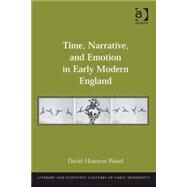Time, Narrative, and Emotion in Early Modern England
, by Wood,David Houston- ISBN: 9780754666752 | 0754666751
- Cover: Hardcover
- Copyright: 11/28/2009
Exploiting a link between early modern concepts of the medical and the literary, David Wood suggests that the recent critical attention to the gendered, classed, and raced elements of the embodied early modern subject has been hampered by its failure to acknowledge the role time and temporality play within the scope of these admittedly crucial concerns. Wood examines the ways that depictions of time expressed in early modern medical texts reveal themselves in contemporary literary works, demonstrating that the early modern recognition of the self as a palpably volatile entity, viewed within the tenets of contemporary medical treatises, facilitated the realistic portrayal of literary characters and served as a structuring principle for narrative experimentation. The study centers on four canonical, early modern texts notorious among scholars for their structural- that is, narrative, or temporal- difficulties. Wood displays the cogency of such analysis by working across a range of generic boundaries: from the prose romance of Philip Sidney's Arcadia, to the staged plays of William Shakespeare's Othello and The Winter's Tale, to John Milton's stubborn reliance upon humoral theory in shaping his brief epic (or closet drama), Samson Agonistes. As well as adding a new dimension to the study of authors and texts that remain central to early modern English literary culture, the author proposes a new method for analyzing the conjunction of character emotion and narrative structure that will serve as a model for future scholarship in the areas of historicist, formalist, and critical temporal studies.







